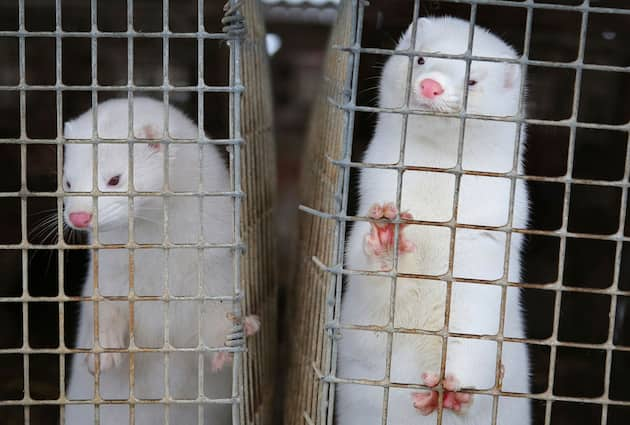Avian flu has killed scores of mink in Spain. But how did the pathogen spread between the animals? And what impact does that have on us humans?
Experts are worried about an outbreak of bird flu on a Spanish mink farm. They see signs that the H5N1 virus is adapting to mammals – and this could also make it more dangerous for humans.
The pathogens had previously been found in other mammal species – such as raccoons, foxes, martens or seals – said Thomas Mettenleiter, President of the Friedrich Loeffler Institute for Animal Health, the German Press Agency. So far, however, there have been individual events in which the virus has passed from a bird to a mammal.
With the outbreak in Spain in October 2022, however, it could be that “the pathogen really did spread from mammal to mammal – i.e. from mink to mink”. Other researchers also believe that this is possible or even probable. The events in Spanish mink breeding could have been an indication of a further adaptation step of the virus, says Mettenleiter.
The background to the concern is the currently rampant, largest ever documented wave of bird flu in birds, which extends over several continents. This gives the pathogen more opportunities to spread to mammals. In addition, the cramped conditions in which the mink were kept were conducive to such a possible spread among these animals, says Mettenleiter. Therefore, the event in Spain was “definitely a warning signal”.
Tom Peacock, a virologist at Imperial College London, was even more drastic. “This is incredibly worrying,” he told Science magazine. For him, this is “a clear mechanism for how an H5 pandemic could start”. When asked by “Spiegel” Mettenleiter weakened this: The experiences from that time could prove to be very valuable in the event of a renewed spread of zoonotic viruses. “But the current situation cannot be compared with the corona pandemic.”
At a farm in the northwestern region of Galicia, animals kept there began dying in October last year, Science magazine reported. At first, veterinarians expected the coronavirus to be the trigger. But tests showed that the H5N1 virus had led to the deaths. As a result, the farm’s more than 50,000 mink were killed and their carcasses destroyed. Farm workers themselves were not infected. An analysis of the case has just been published in the magazine “Eurosurveillance”.
Since the receptors to which the virus docks in the airways of birds are rarer in mammals, they are usually spared from bird flu, according to Science. However, animals could contract bird flu by ingesting wild bird droppings or preying on infected animals, Hualan Chen, a virologist at the Harbin Veterinary Research Institute in China, told Nature magazine. Spread among mammals, on the other hand, indicates that there is a greater risk to public health.
According to the “Science” report, it is not known how easily the virus found in mink can infect humans or spread between them. However, several mutations were found in virus samples from four animals. One of them contributes to the fact that the H5N1 virus can multiply better in mammalian tissue. However, another known, worrying mutation was not found.
Five infections in humans were reported worldwide with the current strains of the virus variant, one each in Great Britain, the USA and Ecuador and two in Spain, Mettenleiter told the “Spiegel”. “All those affected had close contact with infected poultry. So far, the pathogen has not been passed from person to person.” Apart from the case from Ecuador, the infections were mild, and the person from Ecuador, who was initially seriously ill, has now recovered.
But how well prepared would we actually be? According to Mettenleiter, there is “worldwide experience” with zoonotic influenza viruses, i.e. those that spread from animals to humans. “Every case of influenza infection in humans with a previously unknown virus is tracked in order to identify the virus and its origin.” For example, the Robert Koch Institute (RKI) has recorded several individual cases of such transmissions of influenza viruses from pigs to humans.
However, Mettenleiter would like to see better tracking of influenza infections in mammals and ongoing characterization. “As soon as viruses with increased zoonotic potential were then identified, higher safety measures could be implemented.”
The bird flu outbreak also highlights the risks of mink farming. Even the corona virus, which was brought into mink farms by humans, has spread rapidly among the animals. Researchers fear the mink industry could become a constant source of infection and a breeding ground for viral mutations.
Bird flu has been plaguing Europe on a regular basis for years. While the pathogen in connection with bird migration in the past occurred in this country mainly in the cold season, there have recently been infections throughout the year. The currently dominant virus is considered harmless to humans.
